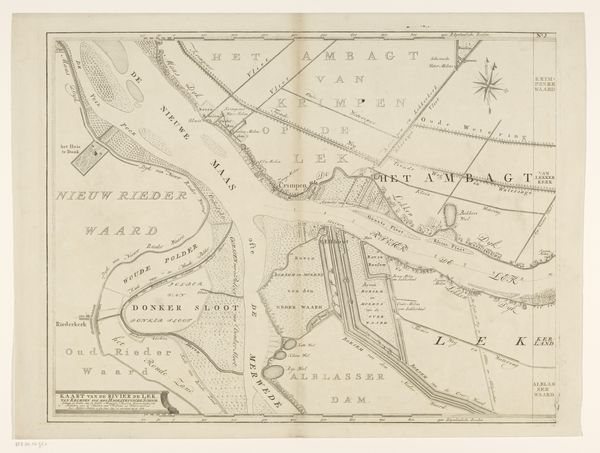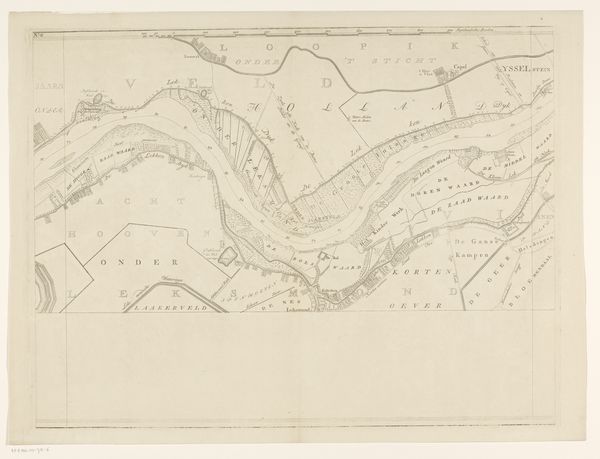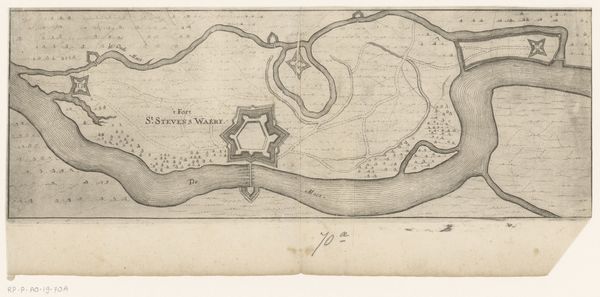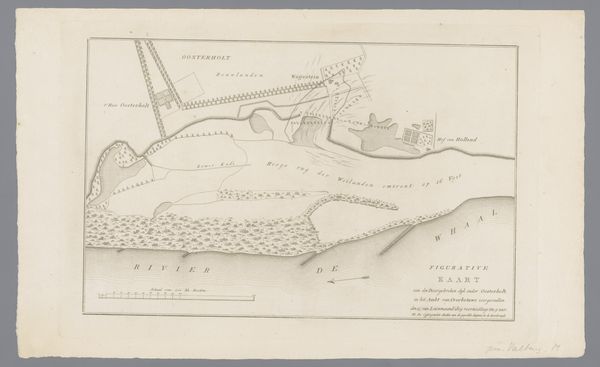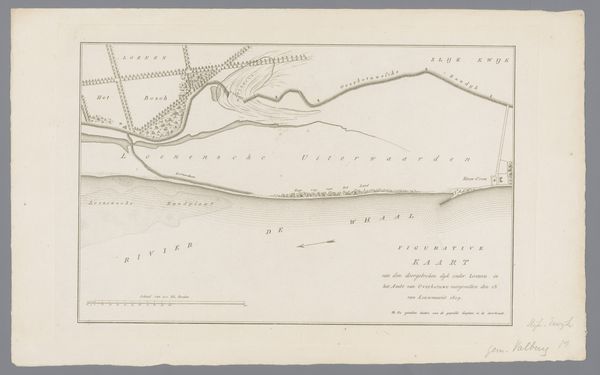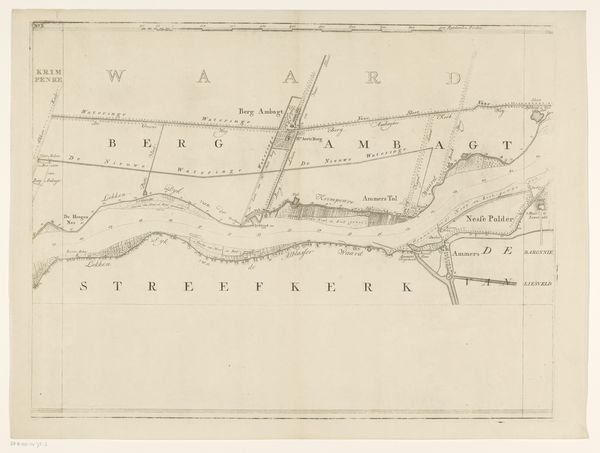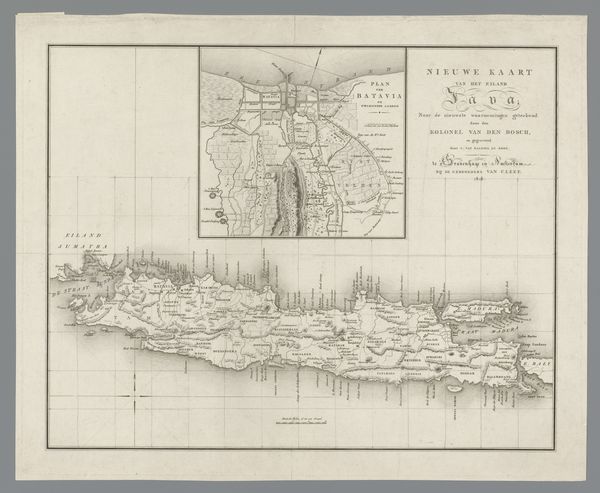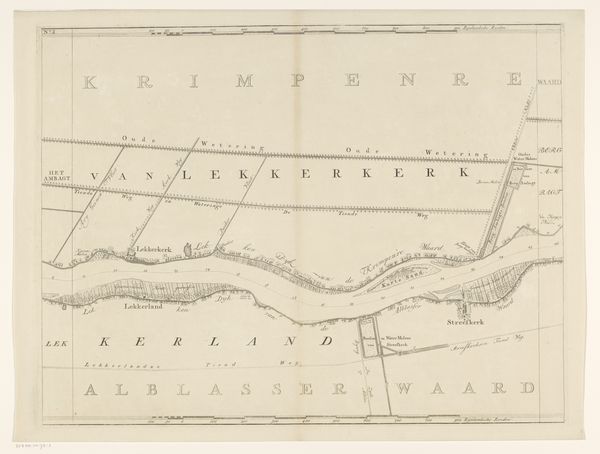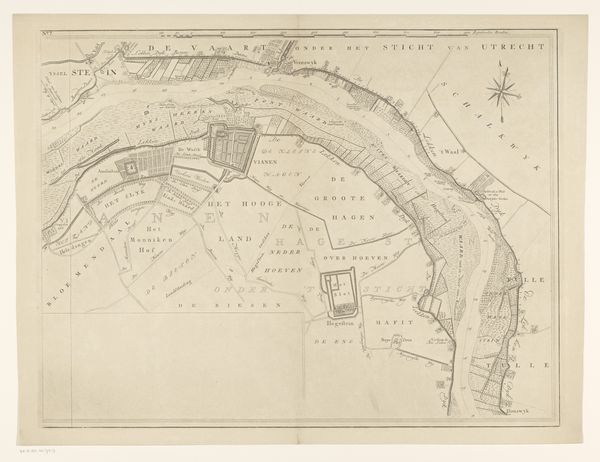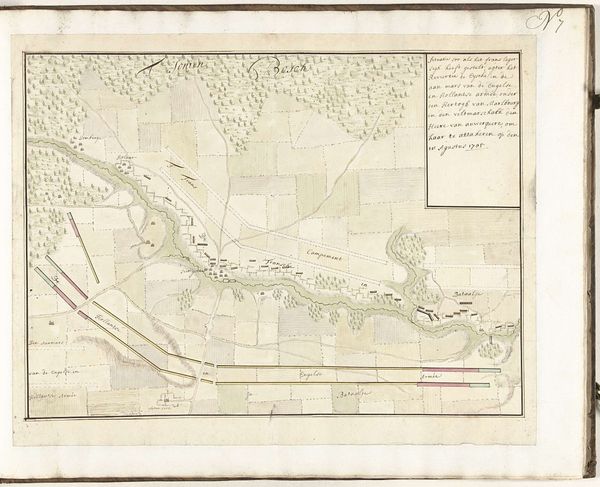
print, etching
dutch-golden-age
etching
landscape
river
etching
Dimensions: height 500 mm, width 658 mm
Copyright: Rijks Museum: Open Domain
This is Isaak Tirion’s “Map of the Lek River,” made around 1750 with pen, brush, and ink. Notice how Tirion meticulously renders the riverbanks and fortifications. These symbols of human intervention reveal a struggle to control the natural world. Consider the recurring motif of the fortified city. We see its echo in the ancient walled cities of Mesopotamia and Renaissance Italy. These architectural forms speak of protection but also of constraint, a visual representation of humanity’s complex relationship with its environment and with each other. This tension between shelter and confinement is rooted in our collective memory. The river itself, a sinuous line cutting through the landscape, has, since the earliest civilizations, represented life, sustenance, and the ever-flowing passage of time. It appears in countless myths and legends as a boundary, a source, and a metaphor for the human journey. The emotional power of the river lies in its dual nature: both a provider and a potential threat. These symbols are not static. The river, the wall, the city, all evolve in meaning, reflecting humanity’s ever-changing relationship with its world.
Comments
No comments
Be the first to comment and join the conversation on the ultimate creative platform.
